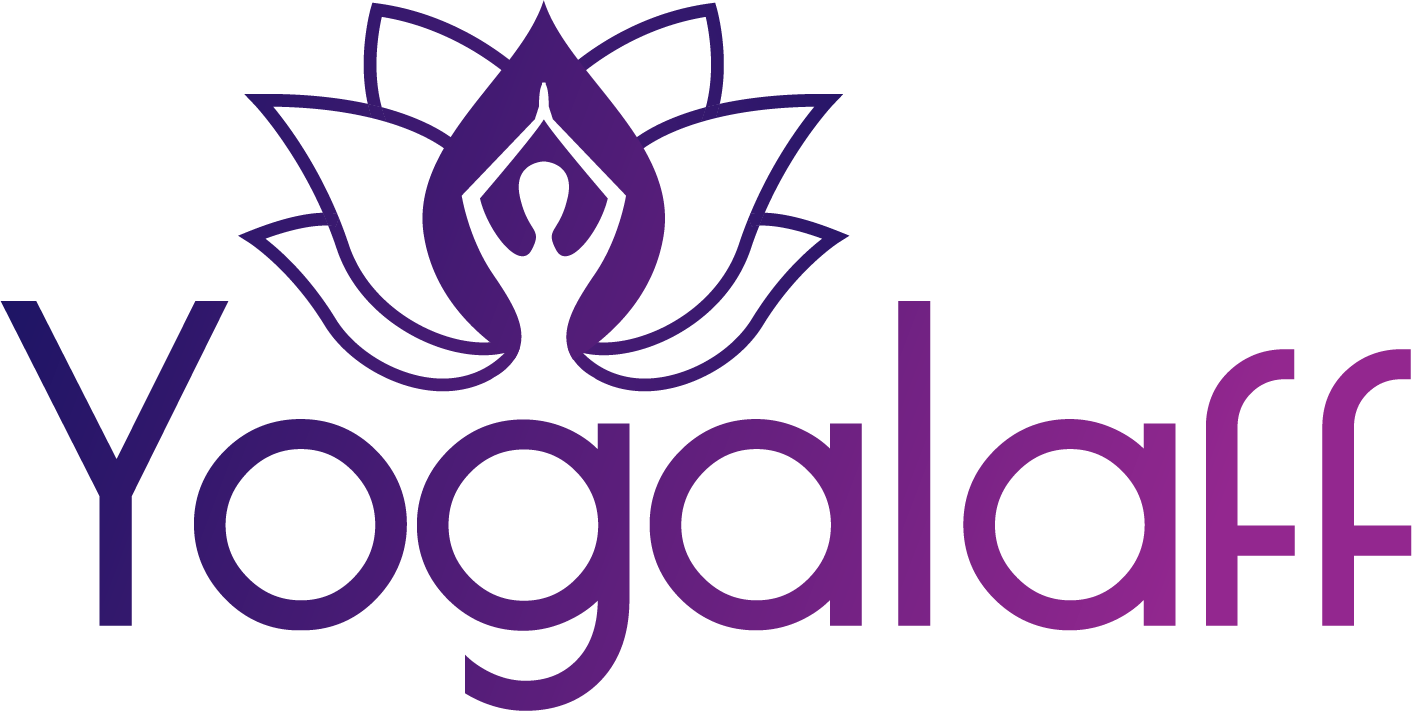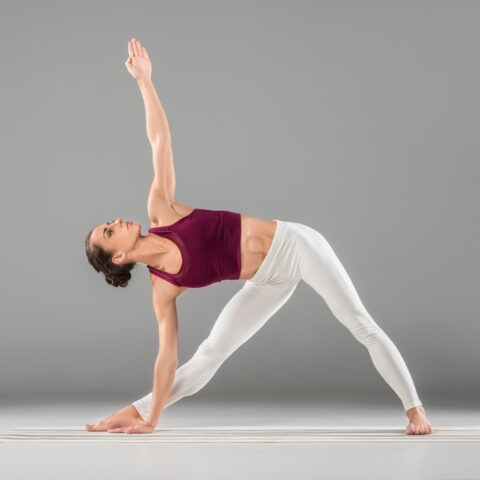Hatha Yoga is a style of yoga that is used to describe most of the practices of yoga from Vinyasa to Ashtanga and many in between.
If you can think of any modern-day style of yoga from core power yoga to goat yoga, then you have a pretty good idea of the different practices in between.
Hatha means “willful” or “forceful” in Sanskrit. In today’s society, we use yoga as a way of slowing down and a coping mechanism for our hectic and often times auto-pilot lives. We find ourselves dropping into yoga classes or incorporating a normal practice into our daily lives.
Yoga, more specifically Hatha was not always like that, the ancient version was done to prove strength and endurance to oneself to perfect the body and senses.
Eventually, over the course of time, the Eastern and Western worlds slowly began to mold this style into a more gentle practice.
Although the practice is different from when it first started until now, there is one conclusion that everyone can agree on, Hatha Yoga encompasses asana (poses), pranayama (breath), mudras (hand movements) and mantra (chants) techniques and that most of us desire to become better versions of ourselves physically, mentally and emotionally.
This practice is for anyone and once you decide the level of movement you want for your body, choosing the correct class for you will be easy. Hatha Yoga has a consistent handful of poses that are done in each class.
Each pose is beneficial for the yogi in its own way and is done by connecting breath and flow. This practice has been around since the 11th century and has evolved over the years to become whatsoever the yogi needs it to be to fit their current needs.
History of Hatha Yoga
The practice of Hatha Yoga began in the Eastern world in the 11th century and was integrated into the Western world in the 19th century.
During the 11th century, the main points of the practice were to sacrifice certain aspects of your life, which usually meant leaving your families, occupations, and responsibilities, in order to live a simpler yet challenging life amongst other yogis.
The experience was a cleansing one and often times yogis found themselves face-to-face with grueling extremes to prove strength and endurance.
These grueling extremes usually consisted of submerging oneself in cold water, never sitting down, hanging upside or balancing on one leg for extended periods of time. Out of these experiences would eventually evolve a practice that migrated to the Western world.
Hatha Yoga includes 15 main poses, 7 of which are seated, 8 of which are non-seated and many, many more. There are a total of 84 poses (also known as asanas) in the practice.
The number 84 is a symbol of the connection between the yogi, yoga instructor, and the universe. Yoga is a spiritual experience that is an individual journey but the instructor and the universe do play important roles on that journey.
Yoga instructors provide guidance to the student and some even say that the universe provides guidance to the student as well. The practice has come a long way since the 11th century and is still evolving as more yogis come into contact with it.
Helpful Tips for Beginning Hatha Yoga
If you are new to yoga or have a solid practice but are looking to take a different approach, Hatha Yoga may be an option for you.
Once you have honed in on which style of yoga you are seeking, you may feel even more comfortable reading the class descriptions and about the instructor.
Of course, you will feel anxious and lost the first time you attend a class, that is normal. But you want to make sure you feel welcome and that it is a safe space to experience your doubts and fears.
Try going into class with low expectations since it will be your first time and you will not know anything other than what you have read in books or on the internet.
Most yogis are drawn to this practice because it is usually a slow-paced environment. The classes are gentle, yet challenging and provide a great balance for beginners.
The practice will challenge you physically and mentally and will provide a fantastic opportunity to unwind and stretch. During class, yogis will be come into different poses and hold each pose through several breath sequences.
This is a great place to start if anyone is looking to work on their alignment, relaxation techniques, building strength as well as flexibility.
As with all new adventures we embark on in our lives, the beginning will be tough and you may feel as though you want to give up. But if you continue to push through you could find that Hatha Yoga is the practice for you.
Everyone who has ever done anything in life had to start where they were and learn all that they needed to know along the way through persistence and experience.
Hatha Yoga Poses
How and when the specific poses that are used in Hatha Yoga have changed over the course of time.
Ancient Hatha Yoga started the beginning of each class with mudras which are done to seal and re-direct energy into the body. The poses were not incorporated until the end.
The specific poses used in the practice are Savasana, Ardha Matsyendrasana and Headstand.
Savasana (Shavasana or Corpse)
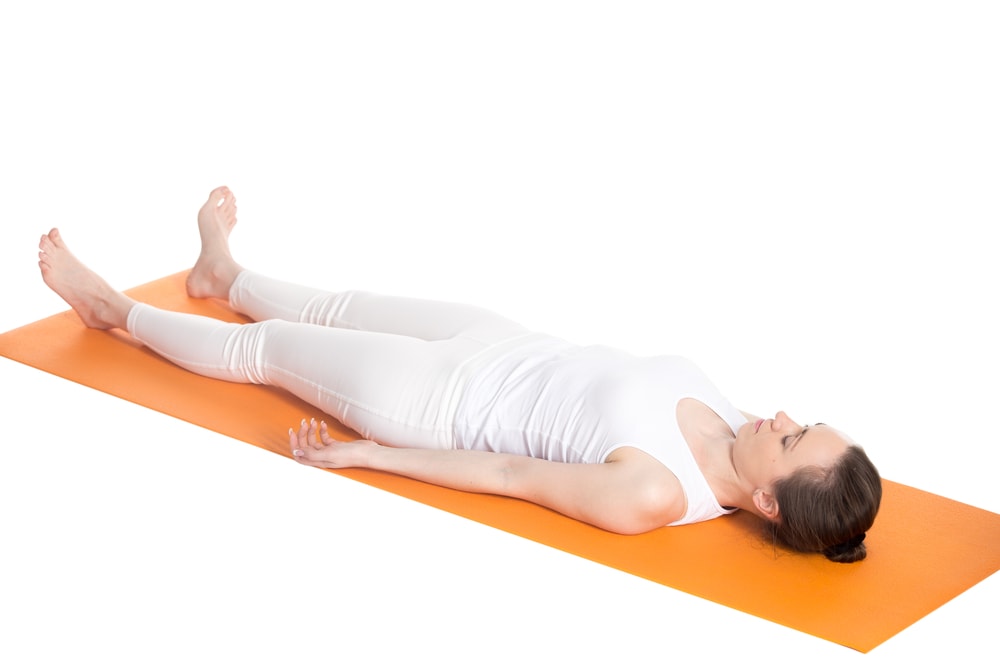 Savasana is a pose that cultivates energy in the body and reflection. Savasana is done at the end of class usually for 5 minutes or as long as the yogi needs.
Savasana is a pose that cultivates energy in the body and reflection. Savasana is done at the end of class usually for 5 minutes or as long as the yogi needs.
This can also be used as a resting and relaxation pose that yogis should go into during practice if they feel poses are becoming too much to handle.
To do Savasana you will want to lay flat on your back with your legs and arms spread out like a starfish. The key is to silence your mind and breathe through every thought and distraction that occurs. It is a very good pose for slowing everything down and for coming back to oneself.
Ardha MatsyendrāSana (Half Lord of the Fishes or Half Spinal Twist)
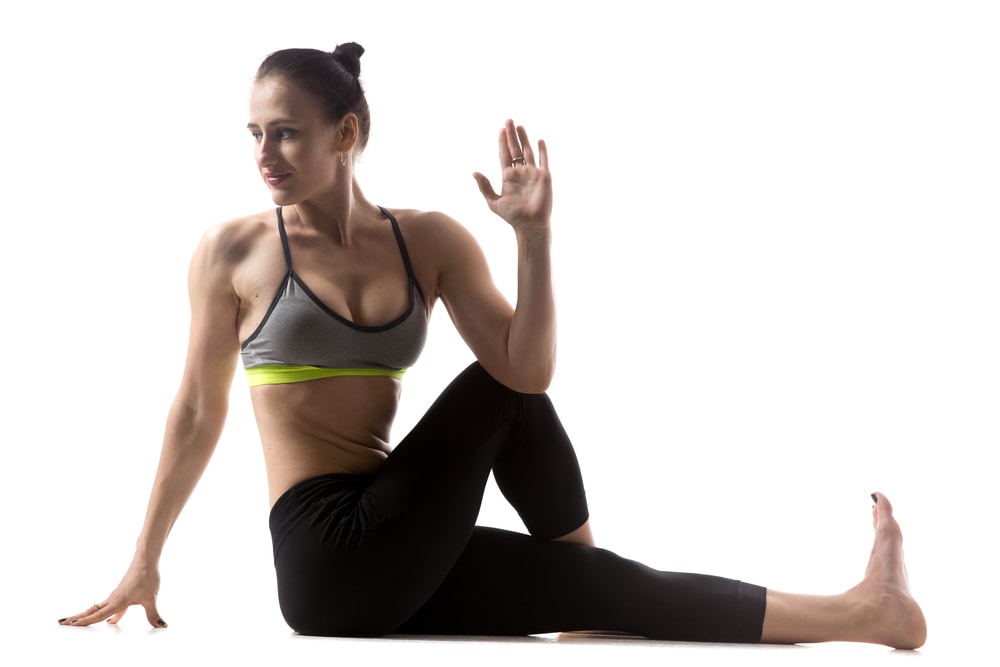 Ardha Matsyendrasana, also known as half lord of the fishes, came from an ancient Nath yogi that was seen resting in a seated, twisted position on top of a fish.
Ardha Matsyendrasana, also known as half lord of the fishes, came from an ancient Nath yogi that was seen resting in a seated, twisted position on top of a fish.
In the ancient practice as well as in modern-day, it is used to help loosen and stretch the hip, neck and shoulder muscles. Especially in today’s society where we are always moving or sitting behind a desk, our bodies do not receive the love and attention that it so desperately craves.
To achieve this pose bring yourself to a seated position with crossed legs, bring one leg out of that position keeping it bent then plant the leg and foot on the outside of the other leg.
Next, you will bring the opposite arm onto the bent leg and twist your body to the opposite side that the leg is being twisted to (if your left leg is bent, twist to the right and if your right leg is bent, twist to the left) and breathe.
Take time to stay in this position and breathe through all of the sensations because it can actually be a great stretch for the hips, neck, and shoulders.
Headstand (Sirsasana)
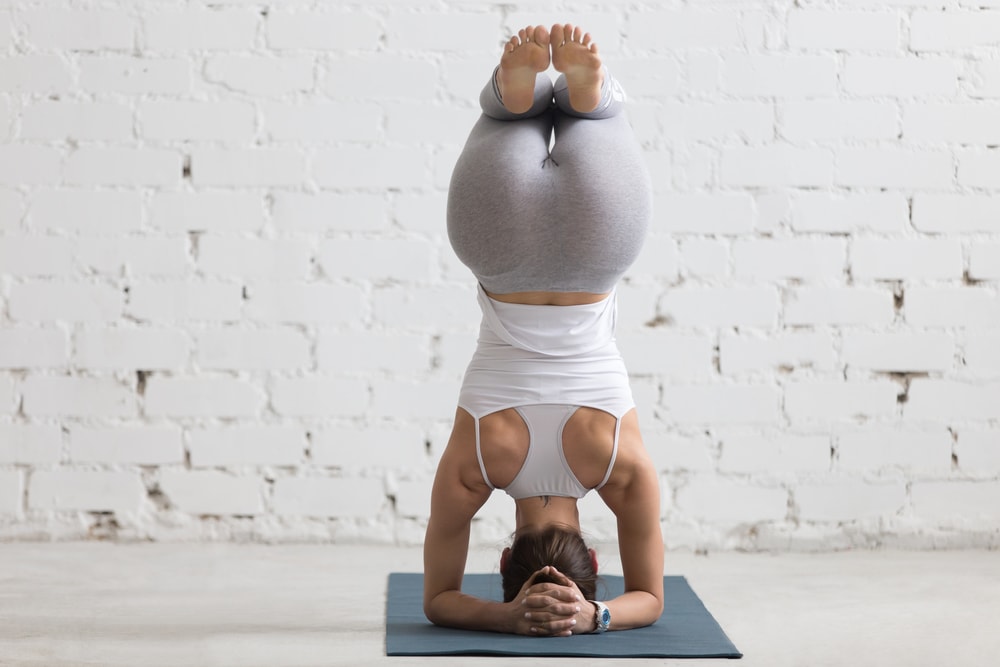 Headstand pose in the ancient Hatha practice was done by yogis to prove strength and endurance, the original concept of the practice.
Headstand pose in the ancient Hatha practice was done by yogis to prove strength and endurance, the original concept of the practice.
The modern-day practice still uses headstand for those two reasons but other benefits have since been unearthed. Headstand is known to improve digestion, strengthen the arms, shoulders, and neck and promote good posture; those are just a few more of the amazing benefits.
It is recommended to only stay in this pose for a few seconds if just beginning. But if you are experienced, this is a great pose to hold for 1 to 5 minutes.
Every yogi should immediately take a child’s pose after each time to safely bring the body back to its normal course of functioning. To achieve this pose, start off kneeling then clasp your hands together and place your arms onto the floor.
Be sure to spread your arms out enough so that your head can fit in the middle. Place your head into the fold of your clasped hands and kick your legs and feet up.
Once you are in this pose you will immediately feel the core engaging in order to hold your body in the air.
If you are just beginning to articulate this pose you should definitely do this pose against a wall but once you feel comfortable, the wall can be used as needed. This can be a challenging yet exciting pose to learn and accomplish for any yogi.
Conclusion
Hatha Yoga has come a long way since it first rooted itself into society during the 11th century. The same techniques of asanas, pranayama, mudras, and mantras exist in each and every style of Hatha Yoga.
With the same techniques present in each style, all yogis whether they are beginners or experts will know what to expect and can plan accordingly.
This practice is unique in its own right because it also encompasses other styles of yoga and can be used to fit each and every yogi’s needs. No matter how long Hatha Yoga has been around, we can all agree on the benefits of all variations and styles of the practice for every yogi that finds their way to them.
